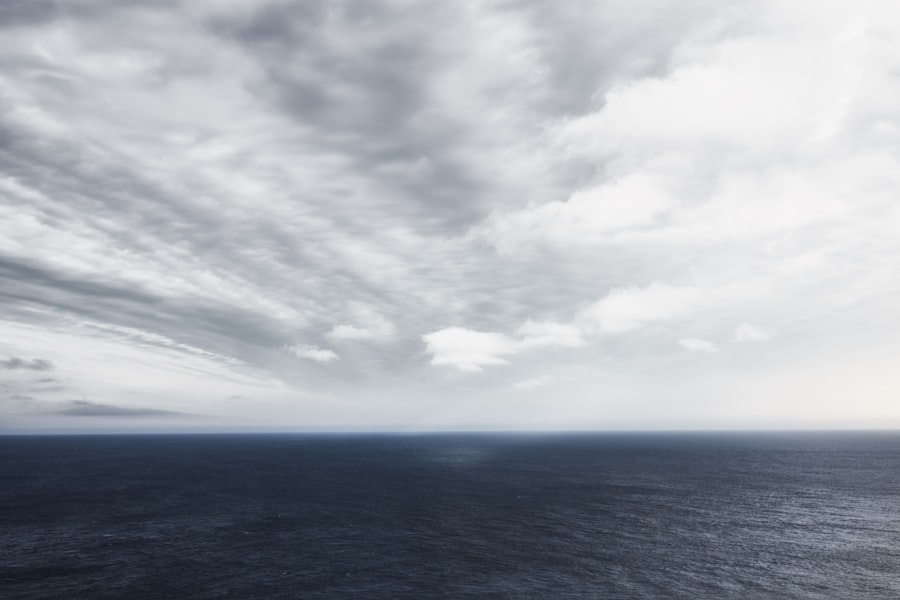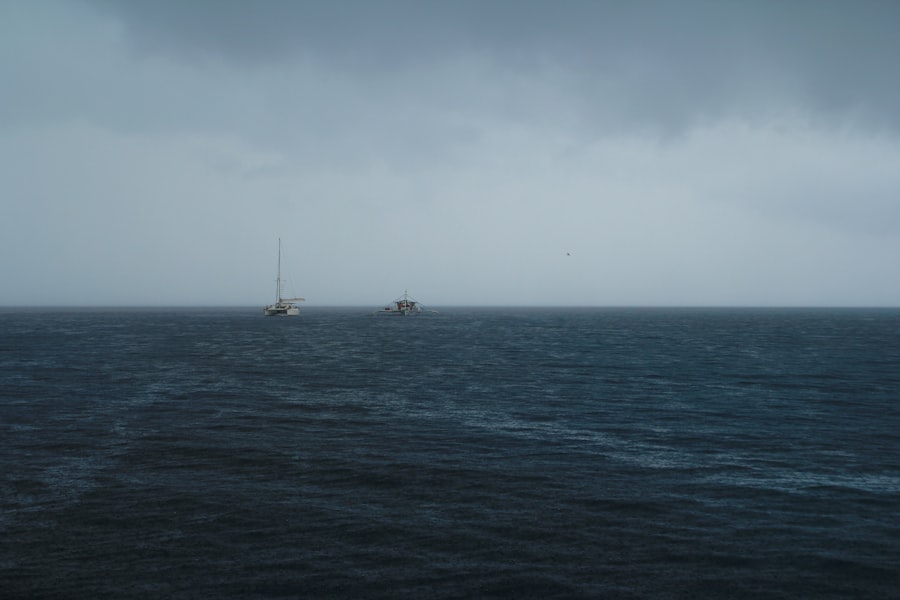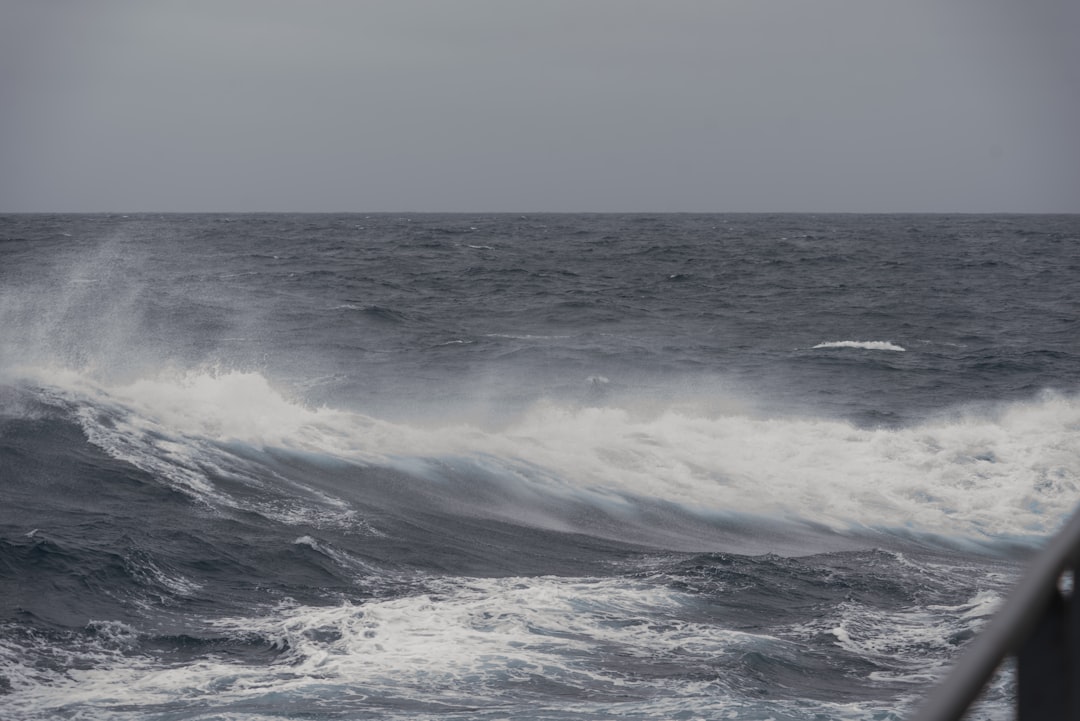The Drake Passage, a body of water situated between the southern tip of South America and Antarctica, is renowned for its tumultuous seas and unpredictable weather. Spanning approximately 800 kilometers (500 miles) in width, it serves as a critical conduit for maritime traffic between the Atlantic and Pacific Oceans. The passage is named after the English explorer Sir Francis Drake, who navigated these waters in the late 16th century.
Its unique geographical position makes it a vital area for oceanic currents, particularly the Antarctic Circumpolar Current, which flows unimpeded around Antarctica and influences global climate patterns. The Drake Passage is often characterized by its rough seas and high winds, which can create challenging conditions for vessels traversing this route. The confluence of cold polar waters and warmer currents from the north leads to a dynamic marine environment that can change rapidly.
Mariners must be acutely aware of these conditions, as they can significantly impact navigation and safety. Understanding the intricacies of the Drake Passage is essential for anyone planning to cross it, whether for commercial shipping, scientific research, or recreational sailing.
Key Takeaways
- The Drake Passage is a narrow stretch of water between South America’s Cape Horn and the South Shetland Islands of Antarctica, known for its treacherous weather conditions and strong winds.
- Accurate marine forecasting is crucial for safe navigation through the Drake Passage, as sudden weather changes can pose significant risks to ships and crew.
- Weather patterns in the Southern Ocean, including the Drake Passage, are influenced by the polar jet stream, low-pressure systems, and the Antarctic Circumpolar Current.
- The impact of Drake Passage weather on navigation includes rough seas, high winds, and potential ice hazards, making it a challenging route for ships and vessels.
- Tools and resources for monitoring Drake Passage conditions include satellite imagery, weather buoys, and advanced forecasting models to provide real-time information for safe passage planning.
- Navigating the Southern Ocean presents challenges such as extreme weather, limited rescue options, and the need for experienced crew and well-maintained vessels.
- Safety precautions for crossing the Drake Passage include securing loose items, ensuring proper safety equipment, and having a well-trained crew prepared for emergency situations.
- Strategies for planning a passage through the Southern Ocean involve careful route selection, timing to avoid severe weather, and maintaining communication with weather forecasting services.
- Case studies of successful Drake Passage crossings highlight the importance of thorough planning, experienced crew, and utilizing advanced weather forecasting technology for safe navigation.
- Environmental considerations in the Southern Ocean emphasize the need for sustainable practices, minimizing pollution, and respecting the delicate ecosystem of the region.
- Future developments in marine forecasting for the Drake Passage may include improved predictive models, enhanced communication systems, and advanced technology to ensure safer and more efficient passage planning.
Importance of Accurate Marine Forecasting
Accurate marine forecasting is crucial for safe navigation in the Drake Passage, where weather conditions can shift dramatically within a short period. Reliable forecasts enable sailors and shipping companies to make informed decisions about their routes and timing, ultimately enhancing safety and efficiency. The unpredictable nature of the weather in this region necessitates advanced forecasting techniques that take into account various meteorological factors, including wind speed, wave height, and atmospheric pressure.
In addition to ensuring safety, accurate marine forecasting plays a significant role in optimizing fuel consumption and reducing operational costs for vessels.
This not only benefits individual operators but also contributes to broader environmental goals by reducing greenhouse gas emissions associated with maritime transport.
Weather Patterns in the Southern Ocean

The Southern Ocean is characterized by its unique weather patterns, heavily influenced by its geographical location and the surrounding landmasses. The region experiences a mix of polar and temperate climates, leading to a variety of weather phenomena. The presence of the Antarctic continent creates a stark contrast between cold air masses from the south and warmer air from the north, resulting in frequent storms and rapidly changing conditions.
These weather patterns are further complicated by the influence of ocean currents, which can exacerbate wind speeds and wave heights. One notable feature of the Southern Ocean’s weather is the prevalence of low-pressure systems that can develop quickly and move across the Drake Passage. These systems often bring strong winds and heavy seas, making navigation particularly hazardous.
Additionally, the region is known for its fog and low visibility conditions, which can pose significant challenges for mariners.
Impact of Drake Passage Weather on Navigation
| Weather Metric | Impact on Navigation |
|---|---|
| Wind Speed | High wind speeds can make navigation difficult and dangerous. |
| Wave Height | Large waves can cause instability and potential damage to vessels. |
| Visibility | Poor visibility can make it challenging to navigate through the passage. |
| Ice Conditions | Icebergs and sea ice can pose significant hazards to navigation. |
The weather conditions in the Drake Passage have a direct impact on navigation, influencing everything from route planning to vessel performance. High winds and large waves can create dangerous situations for ships, leading to delays or even accidents if not properly managed. Mariners must be prepared to adapt their plans based on real-time weather information, which requires a deep understanding of both local conditions and broader meteorological trends.
Moreover, the unpredictable nature of the Drake Passage means that even experienced sailors can find themselves caught off guard by sudden changes in weather. This unpredictability necessitates a proactive approach to navigation, where crews are trained to respond quickly to emerging conditions. The consequences of failing to account for weather can be severe, ranging from damage to the vessel to loss of life.
Therefore, understanding how weather impacts navigation in this region is paramount for ensuring safe passage.
Tools and Resources for Monitoring Drake Passage Conditions
To navigate the challenges posed by the Drake Passage’s weather, mariners have access to a variety of tools and resources designed for monitoring conditions. Satellite technology has revolutionized marine forecasting, providing real-time data on sea surface temperatures, wave heights, and wind patterns. This information is crucial for making informed decisions about navigation and safety in such a volatile environment.
In addition to satellite data, various online platforms offer detailed marine forecasts specifically tailored to the Drake Passage. These resources often include interactive maps that display current conditions and predictions for the coming days. Furthermore, many vessels are now equipped with advanced navigation systems that integrate weather data directly into their operations, allowing crews to make adjustments on-the-fly based on real-time information.
By leveraging these tools, mariners can enhance their situational awareness and improve their chances of safely crossing this challenging body of water.
Challenges of Navigating the Southern Ocean

Navigating the Southern Ocean presents numerous challenges beyond just unpredictable weather. The region is known for its strong currents, particularly the Antarctic Circumpolar Current, which can create hazardous conditions for vessels attempting to cross the Drake Passage. These currents can lead to significant variations in sea state, making it difficult for ships to maintain stability and control.
Additionally, icebergs pose another significant threat in these waters. While most icebergs are found further south near Antarctica, drifting ice can occasionally make its way into the Drake Passage, creating hazards for unsuspecting vessels. Mariners must remain vigilant and utilize ice detection systems when navigating these waters to avoid potential collisions.
The combination of strong currents, unpredictable weather, and ice hazards makes navigating the Southern Ocean one of the most challenging endeavors in maritime travel.
Safety Precautions for Crossing the Drake Passage
Given the inherent risks associated with crossing the Drake Passage, implementing safety precautions is essential for any vessel undertaking this journey. One fundamental precaution is thorough pre-voyage planning that includes detailed route assessments based on current weather forecasts and sea conditions. Crews should familiarize themselves with potential hazards along their intended path and develop contingency plans in case of emergencies.
Moreover, ensuring that all safety equipment is in proper working order is critical before setting sail. This includes life rafts, emergency beacons, communication devices, and first aid kits. Regular drills should also be conducted to prepare crew members for various emergency scenarios they may encounter while navigating these treacherous waters.
By prioritizing safety measures and fostering a culture of preparedness among crew members, vessels can significantly reduce their risk while crossing the Drake Passage.
Strategies for Planning a Passage through the Southern Ocean
Effective planning is key to successfully navigating the Southern Ocean and crossing the Drake Passage. One strategy involves closely monitoring long-term weather patterns leading up to the voyage. By analyzing historical data on seasonal trends and typical weather conditions during specific months, mariners can better anticipate what to expect during their crossing.
Another important aspect of planning is flexibility in scheduling. Given the unpredictable nature of weather in this region, it may be beneficial to allow for additional time in case adverse conditions arise. This flexibility enables crews to wait out storms or unfavorable winds rather than risking a dangerous crossing.
Additionally, maintaining open lines of communication with other vessels in the area can provide valuable insights into current conditions and help inform decision-making during the journey.
Case Studies of Successful Drake Passage Crossings
Examining case studies of successful crossings through the Drake Passage can provide valuable insights into effective navigation strategies and best practices. One notable example is a research expedition conducted by scientists studying climate change impacts in Antarctica. The team meticulously planned their route based on extensive weather forecasts and real-time data from satellite monitoring systems.
Their preparation allowed them to navigate through challenging conditions safely while collecting crucial data for their research. Another case study involves a commercial shipping company that regularly traverses the Drake Passage as part of its global operations. By investing in advanced navigation technology and prioritizing crew training on emergency protocols, they have successfully minimized risks associated with crossing this challenging body of water.
Their commitment to safety has not only protected their vessels but also ensured timely deliveries despite often adverse weather conditions.
Environmental Considerations in the Southern Ocean
The Southern Ocean is not only significant for navigation but also plays a vital role in global ecology and climate regulation. As one of the last relatively untouched marine environments on Earth, it supports diverse ecosystems that are sensitive to changes brought about by climate change and human activity. Navigating these waters requires an awareness of environmental considerations that extend beyond immediate safety concerns.
Mariners must be mindful of their impact on marine life while traversing this region. This includes adhering to regulations designed to protect vulnerable species such as whales and seals during breeding seasons or avoiding areas known for high concentrations of wildlife. Additionally, efforts should be made to minimize pollution from vessels by following best practices for waste disposal and fuel management.
By prioritizing environmental stewardship alongside safe navigation practices, mariners can contribute positively to preserving this unique marine ecosystem.
Future Developments in Marine Forecasting for the Drake Passage
As technology continues to advance, future developments in marine forecasting hold promise for improving navigation through the Drake Passage even further. Innovations such as artificial intelligence (AI) are being explored to enhance predictive modeling capabilities by analyzing vast amounts of meteorological data more efficiently than ever before. This could lead to more accurate forecasts that account for complex interactions between atmospheric conditions and ocean currents.
Additionally, ongoing research into climate change impacts on oceanic systems may yield new insights into how weather patterns in the Southern Ocean are evolving over time. Understanding these changes will be crucial for adapting navigation strategies accordingly while ensuring safety remains paramount amidst shifting environmental conditions. As marine forecasting continues to evolve alongside technological advancements, mariners will be better equipped than ever before to navigate one of the most challenging bodies of water on Earth—the Drake Passage.
For those planning a journey through the Drake Passage, staying informed about the marine forecast is crucial due to the region’s notoriously unpredictable weather conditions. An insightful article that complements this topic can be found on MyGeoQuest, which provides valuable information on navigating challenging marine environments. To delve deeper into this subject, you can read more about it by visiting the following link: MyGeoQuest. This resource offers a comprehensive overview of the factors affecting marine travel in the Drake Passage and other similar areas.
WATCH NOW! Drake Passage: Earth’s Deadliest Waters Revealed
FAQs
What is the Drake Passage marine forecast?
The Drake Passage marine forecast provides information about the expected weather and sea conditions in the Drake Passage, a body of water between South America’s Cape Horn and the South Shetland Islands of Antarctica.
Why is the Drake Passage marine forecast important?
The Drake Passage is known for its notoriously rough and unpredictable weather and sea conditions. The marine forecast is important for the safety of ships and vessels navigating through this challenging area.
What type of information is included in the Drake Passage marine forecast?
The marine forecast typically includes information about wind speed and direction, wave height, swell direction, visibility, and any potential hazards such as storms or icebergs.
Where can I find the Drake Passage marine forecast?
The marine forecast for the Drake Passage can be obtained from various sources, including national meteorological agencies, maritime weather websites, and through communication with maritime authorities and vessel operators.
How often is the Drake Passage marine forecast updated?
The marine forecast for the Drake Passage is typically updated at regular intervals, with more frequent updates during periods of rapidly changing weather conditions. Vessels in the area may also receive real-time updates through communication with weather services.
